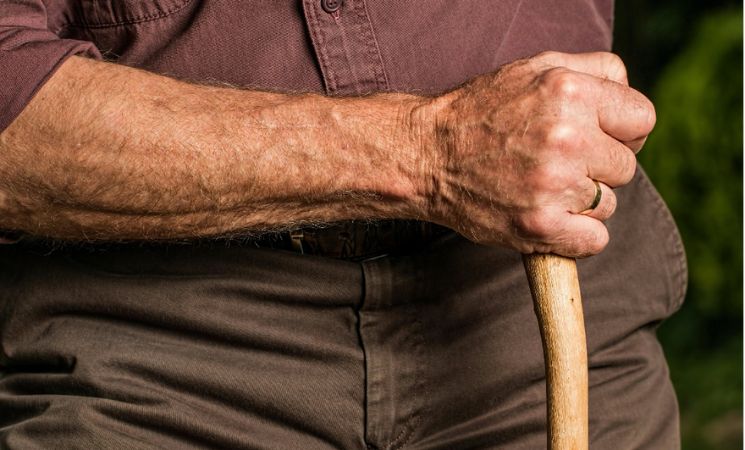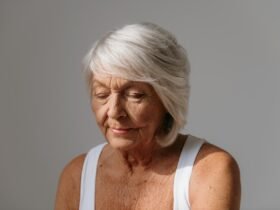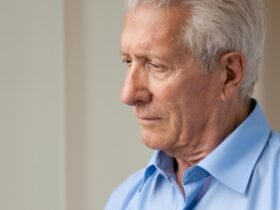Aging is an unavoidable part of life, and it shows up in various ways for different individuals. Whether it’s subtle changes in the skin or more noticeable physical transformations, recognizing the signs of aging early allows for better management and care. While some of these changes are simply a natural progression, others might indicate that certain adjustments in lifestyle, diet, or skincare are needed.
This article discusses the top signs of aging, what they mean for your health and well-being, and how to manage them.
1. Fine Lines and Wrinkles
One of the earliest signs of aging is the appearance of fine lines and wrinkles, particularly in areas that are prone to repetitive movements, such as around the eyes, forehead, and mouth. These lines develop due to the gradual breakdown of collagen and elastin, two key proteins that provide structure and flexibility to the skin.
As we age, our skin’s ability to regenerate and maintain its smooth surface diminishes, leading to the formation of wrinkles. Environmental factors, especially sun exposure and smoking, can accelerate this process, making fine lines more pronounced.
Protecting the skin with a daily SPF and maintaining a good skincare routine can slow down the appearance of wrinkles, but the natural aging process will still play its part.
2. Sagging Skin
Another noticeable sign of aging is sagging skin, particularly around the jawline and neck. This happens as the skin loses its elasticity over time due to a decline in collagen production. Gravity also contributes to the skin’s drooping appearance, and without sufficient elasticity, the skin can no longer maintain its firm structure.
A review of Dr. Scott Thompson, a renowned facial plastic surgeon, reveals that many patients turn to his expertise to address this concern. Patients commend Dr. Thompson for his compassionate care and innovative approaches, which help them regain a youthful look through customized treatments.
By combining surgical and non-surgical options, he ensures that individuals experience natural-looking results tailored to their unique needs.
3. Age Spots
Age spots, also known as liver spots or sun spots, often appear on parts of the body that have had the most exposure to sunlight, such as the hands, face, shoulders, and arms. These dark patches are caused by the overproduction of melanin in the skin, which becomes more pronounced with repeated UV exposure.
While age spots themselves are harmless, their appearance can be a cosmetic concern for many. Preventing further sun damage is key to managing age spots.
Using sunscreen daily, even on cloudy days, can help prevent their formation. For those looking to reduce the appearance of existing spots, there are various treatment options, including topical creams, chemical peels, and laser treatments that can lighten the dark patches over time.
4. Thinning Hair
As we age, hair thinning becomes a common issue for both men and women. Hair follicles become smaller, producing finer, shorter strands, and the overall volume of hair decreases.
Hormonal changes play a significant role in this, especially for women going through menopause and men experiencing male pattern baldness.
Hair thinning can also result from genetics, stress, and nutritional deficiencies, making it a multifactorial issue.
To combat thinning hair, individuals may explore hair supplements, seek professional advice for hair restoration options, or use specialized shampoos and treatments that target hair loss.
5. Loss of Skin Elasticity
Along with wrinkles and sagging skin, the overall loss of skin elasticity is another significant sign of aging. This occurs when the skin becomes less firm, and its ability to “bounce back” after being stretched diminishes. The decrease in elastin, along with the skin’s natural aging process, leads to this issue.
Maintaining skin elasticity can be challenging, but it’s not impossible. Incorporating collagen-boosting products like serums and creams alongside a healthy lifestyle that includes a balanced diet and proper hydration can help retain skin firmness for a longer period. Moreover, non-invasive procedures such as microneedling or radiofrequency treatments can help stimulate collagen production and improve the skin’s overall texture.
6. Dull Complexion
As the skin ages, it tends to lose its natural radiance, resulting in a dull or tired appearance. This change occurs due to a slower cell turnover rate, which means the body takes longer to shed dead skin cells and replace them with new ones. Younger skin, with its faster regeneration process, often has a more vibrant and fresh glow. As we age, however, dead skin cells accumulate on the surface, making the skin look less bright and more uneven.
One way to combat this dullness is by regularly exfoliating to remove the dead skin cells and reveal the newer, healthier cells underneath. Additionally, incorporating products that boost hydration and cell renewal, like serums containing vitamin C or retinol, can help restore a more youthful and glowing complexion.
7. Dry Skin
Dry skin is another common issue as we age, with the skin’s ability to retain moisture diminishing over time. This leads to rough patches, itching, and an overall feeling of tightness, which can become more pronounced during colder months or in low-humidity environments. With fewer natural oils being produced by the skin, it’s important to take extra care to keep the skin hydrated.
To manage dry skin, using a thick moisturizer regularly can make a noticeable difference. It’s also crucial to avoid harsh soaps and hot showers, both of which can strip the skin of its natural oils. For those struggling with more severe dryness, incorporating hyaluronic acid-based products into the routine can provide deep hydration and help maintain moisture balance.
In conclusion, aging brings with it a variety of physical changes, from skin and hair to muscles and joints. While these signs of aging are natural, understanding what they mean and how to manage them is key to maintaining both physical appearance and health.
By taking proactive steps, individuals can continue to feel confident and vibrant throughout the aging process. Aging gracefully is about embracing these changes and making small adjustments to live a healthy and fulfilling life.









